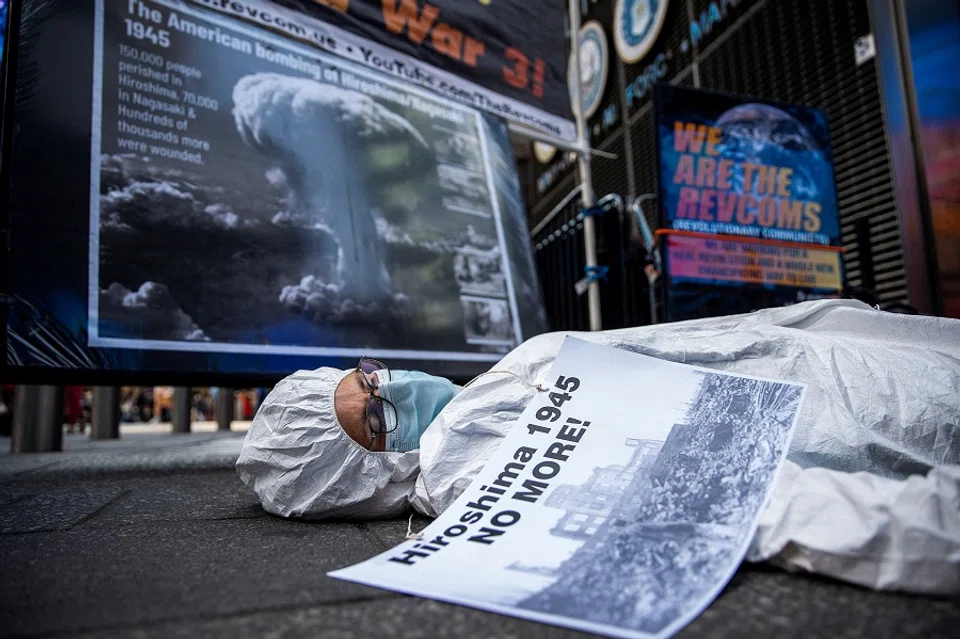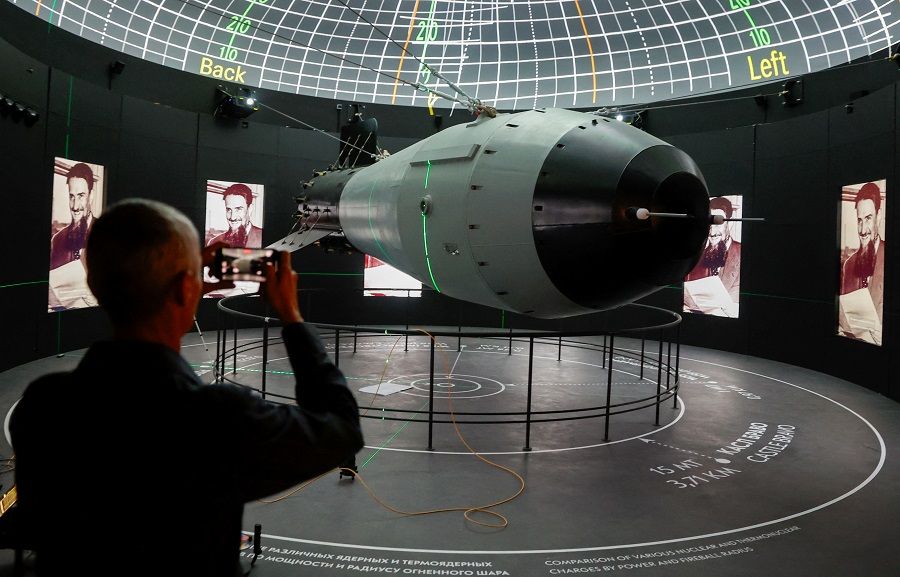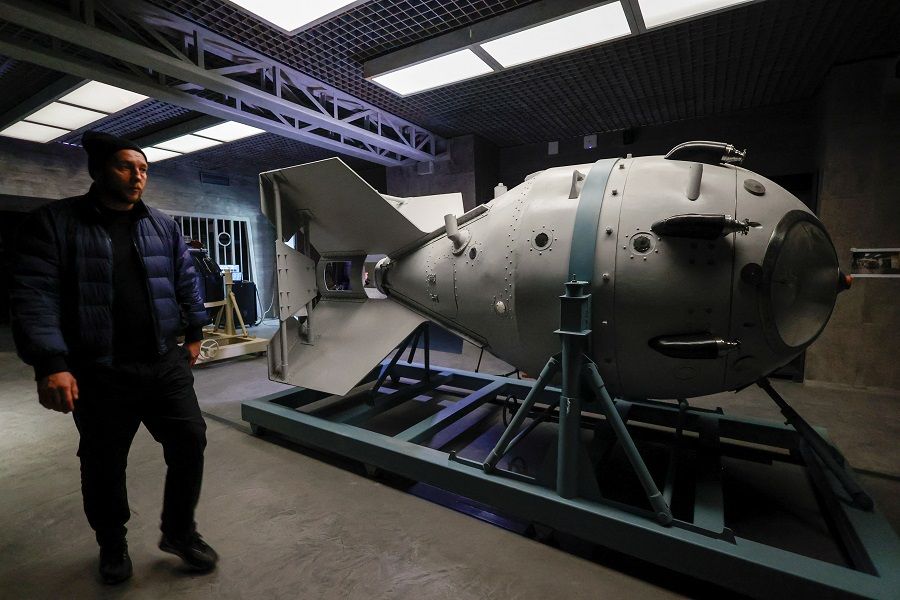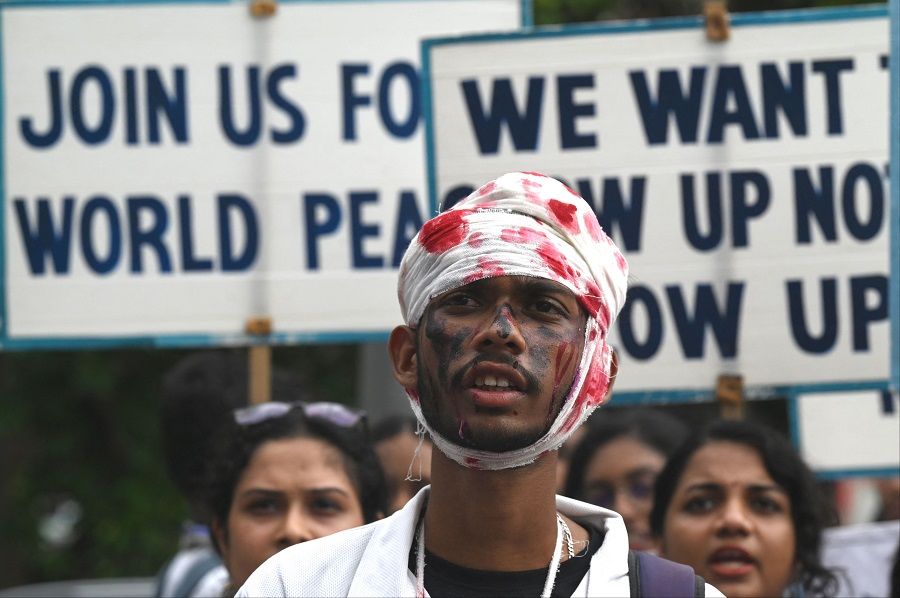Chinese academic: Humanity could destroy itself with nuclear weapons

The movie Oppenheimer, directed by Christopher Nolan and starring Cillian Murphy and Emily Blunt, has hit silver screens globally, and opened in China on 30 August. The film recounts the events leading up to the research and development of the first atomic bomb while also raising an unavoidable, truly soul-searching question: after opening Pandora's box with our own hands, can humanity slay the beast that is nuclear weaponry? In other words; will nuclear weapons wipe out humanity?
...the current world population is 8 billion - detonating about 400 atomic bombs would wipe out humanity...
Humanity may destroy itself
Coincidentally, Chinese researchers recently reported that more than 800,000 years ago, humanity was almost wiped out because of a massive natural disaster. At that time, only about 1,280 human beings were left. This shows how both nature and nuclear weapons have the capability to destroy humanity. But instead of saying that nuclear weapons would destroy humanity, we might as well say that humanity could destroy itself, since nuclear weapons were developed and could be used by humans.
Countless people have explored whether nuclear weapons bring destruction or survival, but the titular character in the film Oppenheimer again answers this question in an artistic and clever manner. Though Oppenheimer never gives a direct answer to this question, he quotes a line from a literary work he enjoys, the Bhagavad Gita, to give an indirect but firm response. In a moment of intimacy with his girlfriend, he is prompted with the answer: "Now I am become Death, the destroyer of worlds."
Destroying the world also means the atomic bomb might destroy humanity, including all life on earth. This line of thinking is not imagined, and can be explained both scientifically and factually. Though it might not be easy for nuclear weapons to destroy the earth itself, eliminating all humanity and living organisms on earth is relatively easier, and it could happen.
According to calculations, based on the atomic bombs dropped on Hiroshima and Nagasaki, 100 atomic bombs could destroy about 2 billion lives. According to the 2023 UN State of World Population report, the current world population is 8 billion - detonating about 400 atomic bombs would wipe out humanity, and there would be no life on earth for a long time.
According to UN estimates, more than 2,000 nuclear tests have been conducted all over the world, with around 22,000 nuclear weapons globally - enough to destroy humanity and other biological organisms on earth 55 times over.

Of course, it would not be so easy to destroy or obliterate planet Earth. During WWII, the Soviet Union created the Tsar Bomba, a hydrogen bomb with the power of 100 million tons of TNT. It is now commonly thought that the Tsar Bomba's explosive yield was as much as 57 million tons of TNT, which is more than 1,500 times more powerful than the atomic bombs dropped on Hiroshima and Nagasaki. The Tsar Bomba was certainly not a practical weapon; even so, it would take 10 million Tsar Bombas detonated at the centre of the earth to ensure destruction of the planet.
It may not be possible for nuclear weapons to destroy the earth, but destroying humanity is possible. According to UN estimates, more than 2,000 nuclear tests have been conducted all over the world, with around 22,000 nuclear weapons globally - enough to destroy humanity and other biological organisms on earth 55 times over.
Controls and guardrails for nuclear weapons
But this is all theoretical; in reality, humanity will think of all sorts of ways to control nuclear weapons, which is also what Oppenheimer and other scientists would have wanted - to get the UN to control nuclear weapons and call for all countries to use nuclear energy in a peaceful manner. Oppenheimer also refused to engage in further research or development of hydrogen bombs, and the US programme on hydrogen bombs was led by Jewish-Hungarian scientist Edward Teller. Oppenheimer and Teller were thus called the father of the atomic bomb and the father of the hydrogen bomb respectively.
There are now treaties relating to the control of nuclear weapons, such as the Treaty on the Non-Proliferation of Nuclear Weapons and the Treaty on the Prohibition of Nuclear Weapons (TPNW), of which the latter is most significant. On 27 October 2016, the First Committee of the UN General Assembly (disarmament and international security committee) voted, with 123 nations in favour of the resolution, 38 against and 16 that abstained.

Nuclear powers such as the US, the UK, France and Russia were among the 38 countries that opposed the TPNW. Of NATO's 28 members back then, only the Netherlands abstained, while all 27 other countries opposed. Even Japan, the only country to experience a nuclear attack, opposed the treaty, while non-nuclear-weapon states Australia and Canada also opposed it. China, India, Pakistan and other states that possess nuclear weapons were among the 16 countries that abstained.
"Why do we need a world if Russia is not in it?" - Russian President Vladimir Putin
It was not until 24 October 2020 that Honduras joined the TPNW and became the 50th state and region to ratify the treaty, reaching the required 50 signatories for the treaty to go into force, as it did 90 days later, on 22 January 2021. United Nations Secretary-General António Guterres said in a video message on the day that the treaty is "an important step towards the goal of a world free of nuclear weapons".
But many countries still oppose the treaty, which indicates that a complete international prohibition and elimination of nuclear weapons seems impossible; it also means that nuclear-weapon states retain the right to use nuclear weapons. Some countries and warmongering leaders such as Russian President Vladimir Putin and deputy chairman of the Security Council of the Russian Federation Dmitry Medvedev have even repeatedly threatened to use nuclear weapons, with Putin even saying: "Why do we need a world if Russia is not in it?"
It is naive to think that humanity's existence on the planet is an unalterable truth.
Humanity's existence not to be taken for granted
This shows that the world is at great risk of nuclear war, which could decimate humanity and all living creatures on earth.

Besides nuclear weapons, biological weapons could wipe out humankind too. It is naive to think that humanity's existence on the planet is an unalterable truth. In fact, chance occurrences or other catastrophic disasters could destroy the human race as well. There have already been numerous crises throughout the history of human and biological evolution, and some human species have indeed gone extinct, such as the Neanderthal.
On 31 August, a study by Chinese researchers published in Science magazine found that some 930,000 years ago, around 98.7% of human ancestors were lost as a result of major climate change during the mid-Pleistocene transition, leading to the near extinction of the human race. The low population numbers persisted until about 813,000 years ago, with only about 1,280 breeding individuals, almost at extinction.
Back in 2008, a US study had also found that some 70,000 years ago, the earth may have experienced a massive drought that led to a dramatic decline in the number of early humans, with only about 2,000 people on earth, on the verge of extinction.
... humans do not own or live on this earth as a given...

Earlier fossil records suggest that the planet faced at least 20 distinct biological extinction events, among which five were mass extinction events that occurred during the End Ordovician, Late Devonian, End Permian, End Triassic and End Cretaceous periods.
Whatever the world faces in the future, be it natural or man-made disasters such as droughts, volcanic eruptions, floods, asteroid impact events, or the use of nuclear or biological weapons, human beings and other living creatures could be annihilated.
So, humans do not own or live on this earth as a given; more thought and action must spark off from the Oppenheimer movie to control and prohibit nuclear weapons, especially to rein in warmongers who want to use them to occupy the territories of other countries and enslave their people, so as to protect humankind and other living creatures. Clearly, humanity shoulders the heavy responsibility of protecting themselves and the earth, and has a long way to go in that aspect.
This article was first published in Lianhe Zaobao as "正视人类的毁灭之途".
